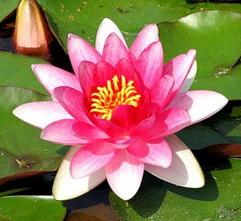National Flag Of India:
On 22 July 1947, the design of the National Flag was adopted by the
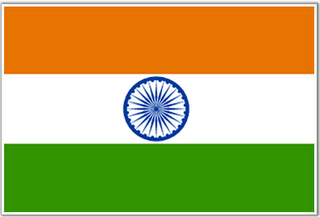 Constituent Assembly of India. The design of National flag is a horizontal tri-colour of deep saffron at the top, white in the middle and dark green at the bottom in equal proportion. In the centre of the white band is a navy-blue wheel which represents the chakra. It has 24 spokes. The national flag of India is also known as “Tiranga”
Constituent Assembly of India. The design of National flag is a horizontal tri-colour of deep saffron at the top, white in the middle and dark green at the bottom in equal proportion. In the centre of the white band is a navy-blue wheel which represents the chakra. It has 24 spokes. The national flag of India is also known as “Tiranga”Every colours of Indian Flag describes some meaning. The saffron colour denotes the strength and courage. The white in the centre is light, the path of truth to guide our conduct. The green shows our relation to soil, our relation to the plant life here on which all other life depends. The Ashoka Wheel in the center of the white is the wheel of the law of dharma.
National Anthem:
The national anthem of India first written in Bengali language by Rabindranath Tagore, later it was adopted in Hindi version by the Constituent Assembly as the national anthem of India on 24 January 1950. The song jana- gana-mana was beautifully written by the legend Rabindranath Tagore.
National Song of India:
National Emblem of India:
The national emblem of India is a replica of the Lion at Sarnath, near Varanasi.
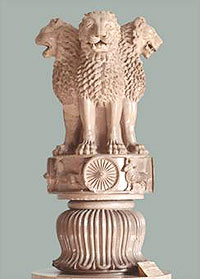 The national symbol represent modern India`s declaration of its ancient commitment to world peace and goodwill. On January 26, 1950 the emblem was adopted by the Indian Government. It has four lions, resting on a circular abacus. The fourth lion is hidden. The emblem symbolizes courage, power. The abacus is enclosed with lion to guide the north direction, the elephant to guide the east direction, the horse of the south direction and bull to guide the west direction. Carved out of a single block of polished sandstone, the capital is crowned by the Dharma Chakra. The abacus is situated in lotus explains the inspiration for creativity and source of life. The words “Satyameva Jayate” which means “Truth Alone Triumphs”, inscribe below the abacus in Devanagari script.
The national symbol represent modern India`s declaration of its ancient commitment to world peace and goodwill. On January 26, 1950 the emblem was adopted by the Indian Government. It has four lions, resting on a circular abacus. The fourth lion is hidden. The emblem symbolizes courage, power. The abacus is enclosed with lion to guide the north direction, the elephant to guide the east direction, the horse of the south direction and bull to guide the west direction. Carved out of a single block of polished sandstone, the capital is crowned by the Dharma Chakra. The abacus is situated in lotus explains the inspiration for creativity and source of life. The words “Satyameva Jayate” which means “Truth Alone Triumphs”, inscribe below the abacus in Devanagari script.National Tree:
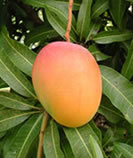 National Fruit:
National Fruit:National Bird:
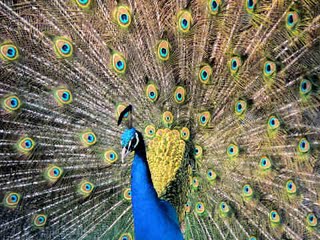 scrub and deciduous forests. It eats insects, fruits, seeds, berries, drupes small mammals and reptiles. The peacock represents beauty, pride and grace. The Indian male Peafowl is known as Peacock and female known as Peahen. Peacock is the most noticeable bird. The peacock is characterized by an extraordinary crest and colored train. The feathers in the train are having spots like eyes. The train consisted of more than 60% of the total body. The truth about the beauty of peacock is world renowned but their voice is extremely harsh. The male of this species is more beautiful. They expand their feathers in the months of monsoon and dance which added more to its beauty. The sight of dancing of peacock is very gorgeous. Peacock had a major role in mythology. It was considered that God Kartik, rides on its back and also feather of peacock lies in the Lord Krishana`s Crown. Peacocks are protected under the Indian wildlife protection act, 1972. The population of peacock is maximum in the arid zone of Rajasthan.
scrub and deciduous forests. It eats insects, fruits, seeds, berries, drupes small mammals and reptiles. The peacock represents beauty, pride and grace. The Indian male Peafowl is known as Peacock and female known as Peahen. Peacock is the most noticeable bird. The peacock is characterized by an extraordinary crest and colored train. The feathers in the train are having spots like eyes. The train consisted of more than 60% of the total body. The truth about the beauty of peacock is world renowned but their voice is extremely harsh. The male of this species is more beautiful. They expand their feathers in the months of monsoon and dance which added more to its beauty. The sight of dancing of peacock is very gorgeous. Peacock had a major role in mythology. It was considered that God Kartik, rides on its back and also feather of peacock lies in the Lord Krishana`s Crown. Peacocks are protected under the Indian wildlife protection act, 1972. The population of peacock is maximum in the arid zone of Rajasthan. National Animal:
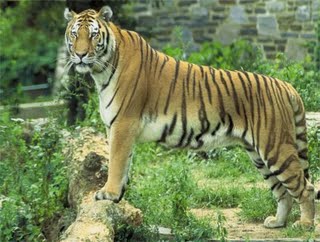
The National animal of India is called The Royal Bengal Tiger. India`s wealth in the field of wildlife is represent by Tiger. The main features of Tiger are incredible power, immense strength, keen predator, grace, intelligence made Tiger called as the lord of jungles and also selected as National Animal.
National Game:
Hockey is the national game of India. In 1927, the Indian Hockey Federation gained global affiliation and joined with International Hockey Federation. Hockey is the game in which India had such a great record. Due to Hockey India got its position in the field of sports and won 8 Olympic gold medals. The best period in Hockey in India was the period from 1928 - 1956 when India won 6 consecutive gold medals in the Olympics. The best player was Major Dhyanchand who made several records in Hockey.
